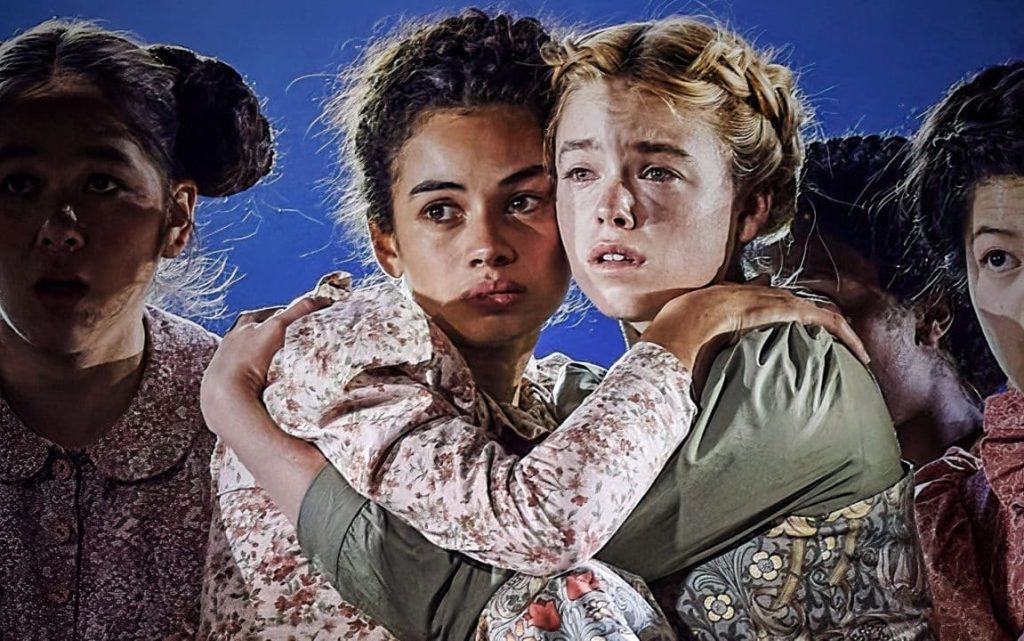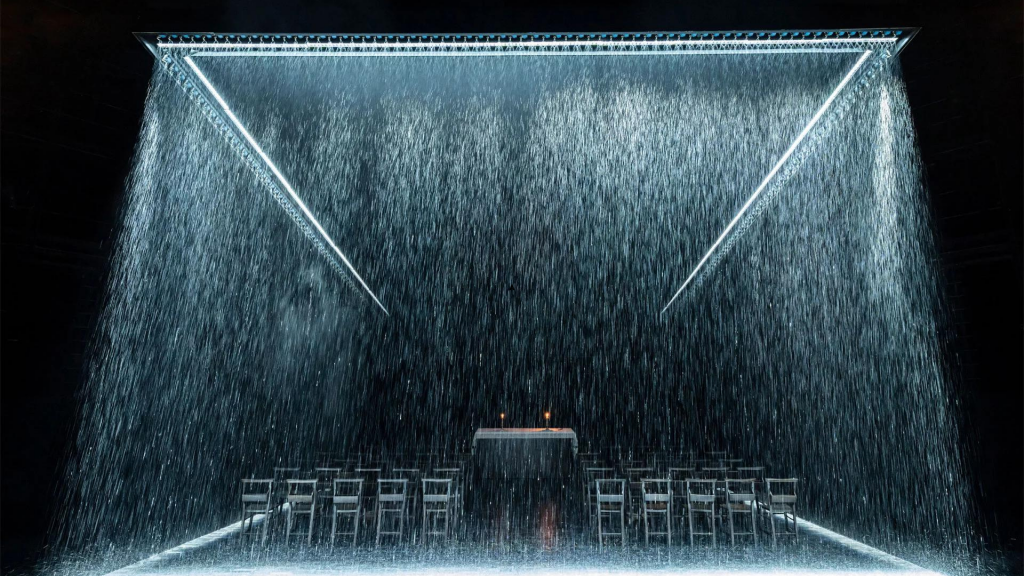Particularly in recent times, it is hard to understate the relevance of The Crucible …
From the 17th century, to the 50s’ McCarthyism (which Arthur Miller was writing under), to today’s claims of ‘cancel culture’, it seems that throughout history, humans as a collective have had an affinity for misguided mob justice. I say misguided, as, from what we can see with the actions of the play, people are too willing to accept lies as the truth to further their own agendas. Perhaps pessimistic, there can be great change made when we come together, after all. But, when watching this literal witch hunt play out, optimism is much more difficult to keep in your grasp.
Lyndsey Turner’s transferral from the National Theatre to the West End’s Gielgud Theatre has brought with it a few changes to the cast, one significant change was the casting of Milly Alcock and Brian Gleeson as Abigail Warren and John Proctor. Their dynamic far more uncomfortable, more difficult and perhaps more poignant by the end when you remember that our martyred ’hero’ is the same man who lured a teenage girl to his bed, then kicked her to the curb when the shame grew too great. Perhaps you would call for his blood too. Alcock’s portrayal of Abigail, the sole girl clad in green, part of the floral menace in pinafore dresses (Catherine Fay), is remarkable, though I often wished to see more venom than petulance in her character.

Gleeson’s palpable desperation becomes more frightening towards the end, as he seeks to “slide together in our pit” and declare himself a lecher along with the leader of all the pretenders. Other standout renewed performances included Fisayo Akinade as Reverend Hale, whose final pleas to Proctor struck a chord within me once again, and Karl Johnson as Giles Corey, a wonderfully pathetic comedic respite in an awfully oppressive play.

Es Devlin’s set design is as spectacular as ever. While the rain framing the stage is palpably impressive, there are also elements of subtle brilliance. The stage becomes cavernous with characters appearing from and disappearing into the black abbeys. The girls also are softly lit up (Tim Lutkin), ghostly aspirations singing their eerie choral song (Caroline Shaw) as the sirens of death. I was particularly impressed with the ensemble scenes, particularly at court, where two dozen actors could be on stage at once, yet were meticulously framed in a manner that still allowed for fluidity of movement.
In my last review, I remarked on Turner’s inclusion of an epilogue, particularly the statement of Abigail becoming a prostitute as though it was some type of revenge or divine justice. There was no such addition in this version, and the play works much better without it. With no commentary on the fates of the characters, or even of Salem and other similar trials, the play ends with Proctor being marched to death. It is this bleakness that provides the emotional impact, this reminder of the impossible challenge, the Catch-22 paradox where you are condemned as soon as you are accused. There is no justice with this ending, only bloody vengeance.

Frustratingly, the show still has no answer for the there-but-not-there ‘race-blind’ casting it utilised. The company is relatively diverse, and yet, there are still direct references to slavery, with the enslaved Tituba (Nadine Higgin) played with a heavy West Indian accent. It is part of a larger discussion to be had when adapting texts with explicit racist references for current times (particularly when these are based on real-life historical events), and it is not an issue that a single play can solve alone.
In Salem, it is the men who rule, and the little girls who serve, until they are granted a slight bit of power and run mad with it. Turner’s adaptation of The Crucible probes new fears into the mouldable nature of justice, and how fragile our hard-fought rights are. Worrying times are on the horizon, Miller knew it then, and Turner reminds us of it now.
The Crucible runs until the 2nd September @ the National Theatre.
